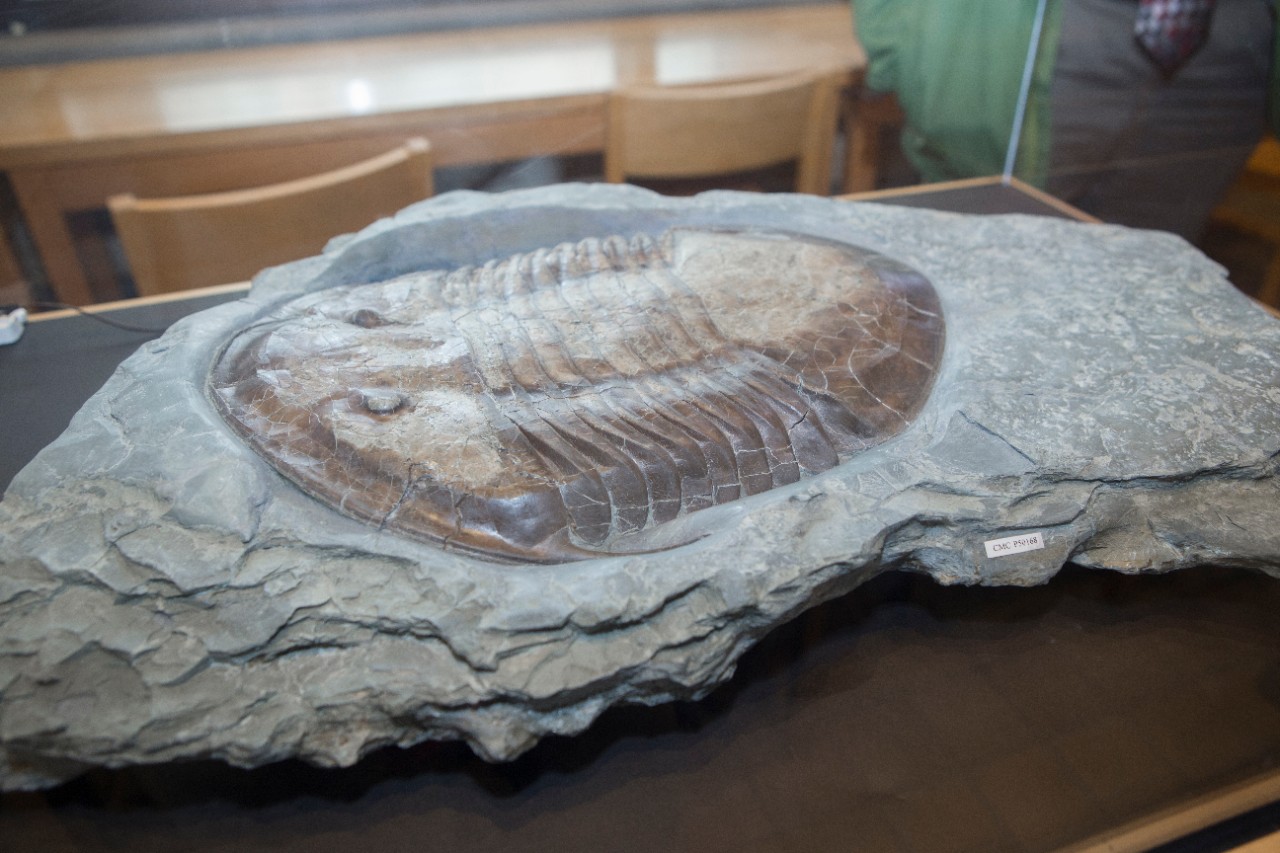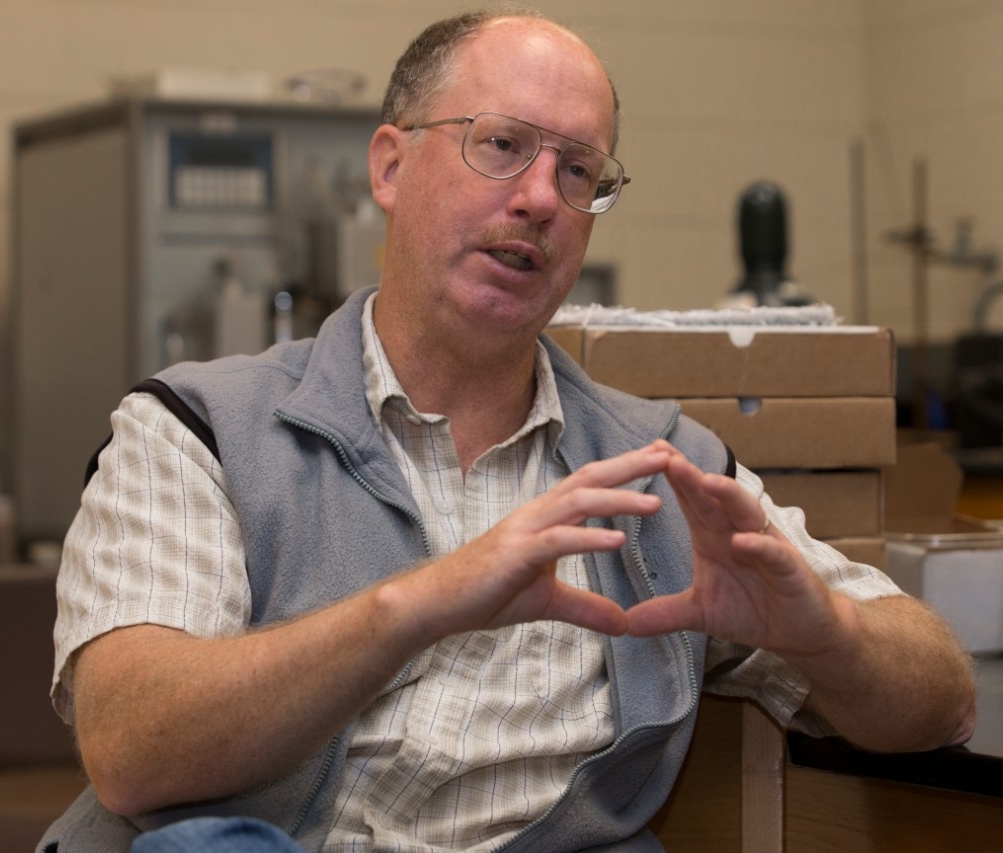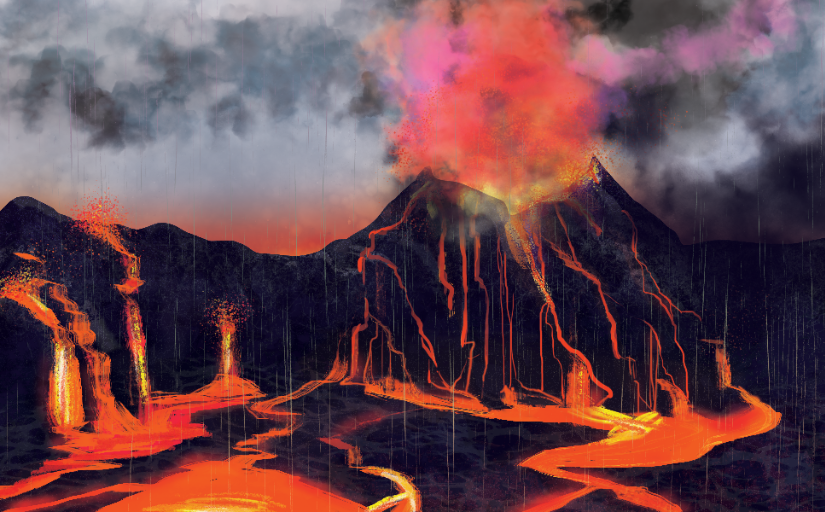
Discover: What caused the Devonian extinction?
UC geology professor Thomas Algeo shares his theory
Discover Magazine turned to a University of Cincinnati geologist to learn more about what caused a mass extinction about 360 million years ago.
The Devonian extinction wiped out as many as 80% of animal species. Wildlife of the Devonian ranged from trilobites to prehistoric precursors of amphibians. The Devonian is known as the Age of Fishes for the great diversity of marine life it spawned.
UC College of Arts and Sciences geology professor Thomas Algeo said the Devonian saw the vast proliferation of vascular plants as well that turned the Earth green with new life: mosses, ferns and trees. Meanwhile, marine life also flourished.

UC geologist Thomas Algeo. Photo/Joseph Fuqua II/UC Marketing + Brand
So what happened?
The extinction coincided with a period of global cooling, likely from volcanic eruptions that covered the sky in sun-reflecting ash. Scientists have also observed the crash of dissolved oxygen in the water required to support marine life, which would have wreaked havoc with the food chain.
“The two leading theories are cooling and the spread of anoxia in the marine environment,” Algeo told Discover Magazine. “The fact of the matter is that they both occurred simultaneously, and they both may have played a role.”
But what caused the oceans to lose oxygen?
Algeo said the explosion of new plant life on Earth for the first time generated a wealth of nutrients or fertilizer that ended up in the water. This created enormous algae blooms. When algae dies, the resulting decomposition removes oxygen from the water, creating vast dead zones.
Algeo said Devonian mass extinction has a lot in common with the current mass extinction we're witnessing today because it has a biological origin: humans.
“It’s important to try to understand the trajectory of events and how they ripple through the biosphere at large in order to try and prevent the worst effects of mass extinction in the future,” Algeo told Discover.
Read the Discover Magazine story.
Featured image at top: A fossilized trilobite on display in UC's Geology Department. Photo/Joseph Fuqua II/UC Marketing + Brand

Scientists believe volcanic eruptions played a role in the Devonian mass extinction more than 360 million years ago. Illustration/Margaret Weiner/UC Marketing + Brand
Related Stories
Allergy season is getting longer because of climate change
March 6, 2025
Allergy season is starting earlier — and lasting longer — as climate change heats up cities across the U.S. While the spring allergy season usually starts in March, more warm weather earlier in the year means people might begin experiencing symptoms in February, or even January, said Ahmad Sedaghat, MD, PhD, professor and director of the Division of Rhinology, Allergy and Anterior Skull Base Surgery in the Department of Otolaryngology at the University of Cincinnati College of Medicine.
Why were evictions in Hamilton County in 2024 so high?
March 5, 2025
Cincinnati Edition’s Lucy May spoke with panelists Nick Zingarelli, director of the Hamilton County Help Center and UC Law staffer; Nicholas DiNardo, managing attorney at Legal Aid Society of Southwest Ohio; and Tom Hodges of J. Thomas Hodges & Associates about evictions in Hamilton County.
Common endometriosis myths, debunked by experts
March 5, 2025
Endometriosis can be a baffling condition due to its unclear cause, lack of symptom consistency and the time it can take to receive an accurate diagnosis. The condition, which affects an estimated one in ten women in the U.S., occurs when tissue similar to that which lines the uterus grows outside of the uterus, typically on the ovaries, fallopian tubes or the lining of the pelvic cavity. Because it’s difficult to understand and diagnose, there are a lot of misconceptions about endometriosis.
